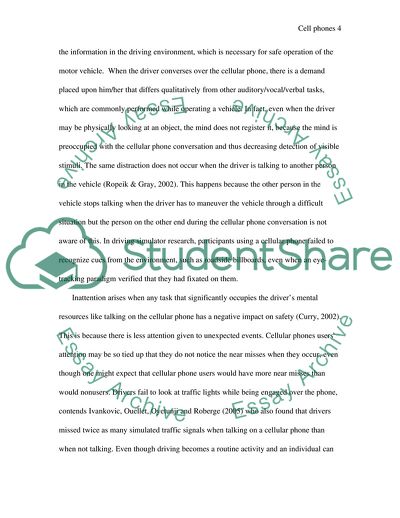Cite this document
(Usage of Cellular Phones While Driving Increases the Risk of Road Acc Essay, n.d.)
Usage of Cellular Phones While Driving Increases the Risk of Road Acc Essay. https://studentshare.org/psychology/1711120-using-cell-phones-while-driving-impairs-driver-and-increases-the-risk-of-traffic-accidents-and-deaths
Usage of Cellular Phones While Driving Increases the Risk of Road Acc Essay. https://studentshare.org/psychology/1711120-using-cell-phones-while-driving-impairs-driver-and-increases-the-risk-of-traffic-accidents-and-deaths
(Usage of Cellular Phones While Driving Increases the Risk of Road Acc Essay)
Usage of Cellular Phones While Driving Increases the Risk of Road Acc Essay. https://studentshare.org/psychology/1711120-using-cell-phones-while-driving-impairs-driver-and-increases-the-risk-of-traffic-accidents-and-deaths.
Usage of Cellular Phones While Driving Increases the Risk of Road Acc Essay. https://studentshare.org/psychology/1711120-using-cell-phones-while-driving-impairs-driver-and-increases-the-risk-of-traffic-accidents-and-deaths.
“Usage of Cellular Phones While Driving Increases the Risk of Road Acc Essay”. https://studentshare.org/psychology/1711120-using-cell-phones-while-driving-impairs-driver-and-increases-the-risk-of-traffic-accidents-and-deaths.


